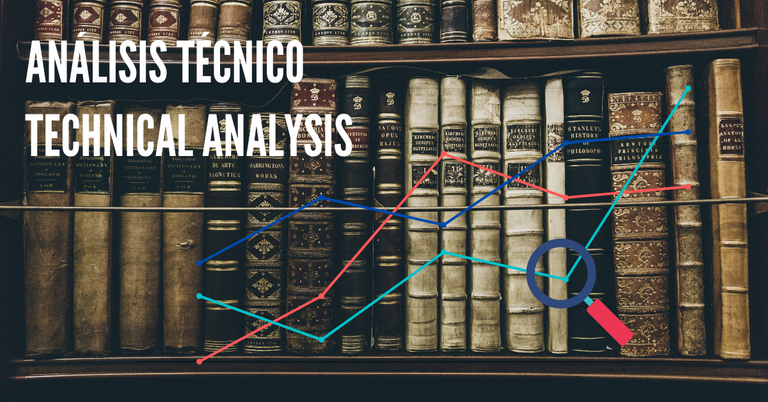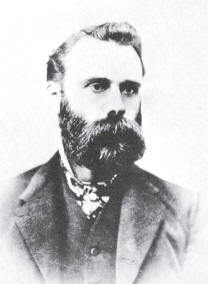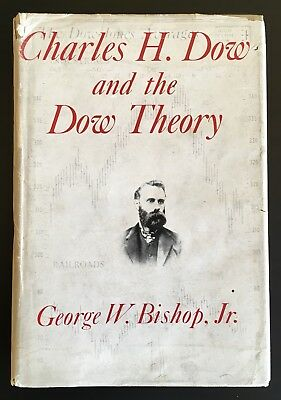
¿Qué es el análisis técnico?
El análisis técnico, es el estudio del comportamiento del mercado, principalmente a través del uso de los gráficos, con el propósito de predecir, con una mayor probabilidad los cambios a futuro en la estructura del mercado.
What is technical analysis?
Technical analysis is the study of market action, mainly through the use of charts, with the purpose of anticipating, with a higher probability, future changes in market structure.

Foto obtenida de wikipedia.com
Historia del análisis técnico
El análisis del comportamiento de los precios se estudia desde hace siglos. Algunos corrientes similares al análisis técnico actual comenzaron a aparecer en el siglo XVII con el español José Penso de la Vega en sus análisis financieros.
Uno de los economistas que más evolucionó el análisis de precios fue el japonés Homma Munesiha, que desarrolló las velas japonesas .Comenzó a analizar los gráficos profundamente y así tratar de predecir su comportamiento, dando así los primeros pasos para fundar los fundamentos del análisis técnico.
A pesar de los avances realizados por José Penso y Homma Munesiha ,el análisis técnico nació con Charles Henry Dow hacia finales del siglo XIX. Charles H. Dow fue el creador del índice Dow Jones y de la teoría que lleva su apellido: La teoría de Dow.Tal fue el éxito de su teoría, que todavía hoy muchos operadores y analistas la aplican de forma frecuente ya que a lo largo de los años , se ha demostrado una alta fiabilidad.
History of technical analysis
The analysis of price behaviour has been studied for centuries. Some trends similar to today's technical analysis began to appear in the 17th century with the Spaniard José Penso de la Vega in his financial analysis.
One of the economists who most evolved price analysis was the Japanese Homma Munesiha, who developed Japanese candlesticks in the 18th century. In order to gain more insight into price movements, he began to analyse charts in depth in order to try to predict their behaviour, thus taking the first steps towards founding the pillars of technical analysis.
Despite the advances made by Jose Penso and Homma Munesiha, technical analysis was born with Charles Henry Dow towards the end of the 19th century. Charles H. Dow was the creator of the Dow Jones index and the theory that bears his name: Dow's theory. This theory is based on a few simple rules about how stock market assets move. Such was the success of his theory that it is still frequently applied by many traders and analysts today, as it has proven to be highly reliable over the years.

Imagen obtenida de wikipedia.com
¿En qué se basa el análisis técnico para argumentar sus predicciones?
A esta pregunta respondió Charles Dow cuando creó su teoría y lo resumió en tres principios:
-> El precio lo descuenta todo: Este es el principio mas importante del análisis técnico. Según los analistas técnicos toda la información está incluida en el precio, es decir, factores políticos, guerras, informes de beneficios de una empresa, situación social de un país...
Dicho lo cual, el análisis técnico no excluye todos los factores que influyen en la bolsa, sino que todo lo que afecte se verá reflejado en el precio , dandole así importancia , por encima de otros sucesos , al movimiento del precio. Digamos, que el análisis técnico se basa en oferta y demanda.
-> Los mercados se mueven en tendencias: Esto es algo que ocurre sin excepción. Eso sí, no olvidemos que una tendencia puede ser alcista o bajista, pero también lateral. Con lo cual, la cotización de una activo se moverá al alza, a la baja o lateralmente.
Según Dow, un activo está en tendencia hasta prueba en contrario. Esto es, hasta que el máximo o mínimo de referencia no se vea rebasado la tendencia continúa., esto se prueba con una de sus teorías , en las que refleja que si el precio toca 2 veces un punto, ya sea de forma alcista , bajista o lateral , ya se podría considerar una tendencia
-> El comportamiento humano se repite: bien es sabido que las personas nos comportamos siempre de la misma forma o, al menos, de forma similar en situaciones parecidas.
El análisis técnico, bajo el precepto de que el comportamiento humano se repite, afirma que inconscientemente se crean patrones en los precios que reflejan este comportamiento. Gracias a eso, su estudio permite predecir los movimientos futuros de los precios. Aquí es donde entra en juego el psicotrading , unos de los puntos mas importantes dentro del trading , que nos ayuda a comprender las emociones que existen dentro del terreno bursátil.
What does technical analysis base its predictions on?
Charles Dow answered this question when he created his theory and summed it up in three principles:
-> Price discounts everything: This is the most important principle of technical analysis. According to technical analysts all information is included in the price, i.e. political factors, wars, profit reports of a company, social situation of a country...
That said, technical analysis does not exclude all the factors that influence the stock market, but everything that affects it will be reflected in the price, thus giving importance, above other events, to the movement of the price. Technical analysis is based on supply and demand.
-> Markets move in trends: This is something that happens without exception. However, we must not forget that a trend can be bullish or bearish, but also sideways. Therefore, the price of an asset will move up, down or sideways.
According to Dow, an asset is in trend until proven otherwise. That is, until the maximum or minimum of reference is not exceeded, the trend continues, this is proven by one of his theories, in which he reflects that if the price touches a point twice, either bullish, bearish or sideways, it could already be considered a trend.
-> Human behaviour repeats itself: it is well known that people always behave in the same way or, at least, in a similar way in similar situations.
Technical analysis, under the precept that human behaviour repeats itself, states that unconsciously patterns are created in prices that reflect this behaviour. As a result, its study makes it possible to predict future price movements. This is where psychotrading comes into play, one of the most important points within trading, which helps us to understand the emotions that exist within the stock market.
Congratulations @certrading! You have completed the following achievement on the Hive blockchain and have been rewarded with new badge(s) :
Your next payout target is 100 HP.
The unit is Hive Power equivalent because your rewards can be split into HP and HBD
You can view your badges on your board and compare yourself to others in the Ranking
If you no longer want to receive notifications, reply to this comment with the word
STOPTo support your work, I also upvoted your post!
Check out the last post from @hivebuzz: